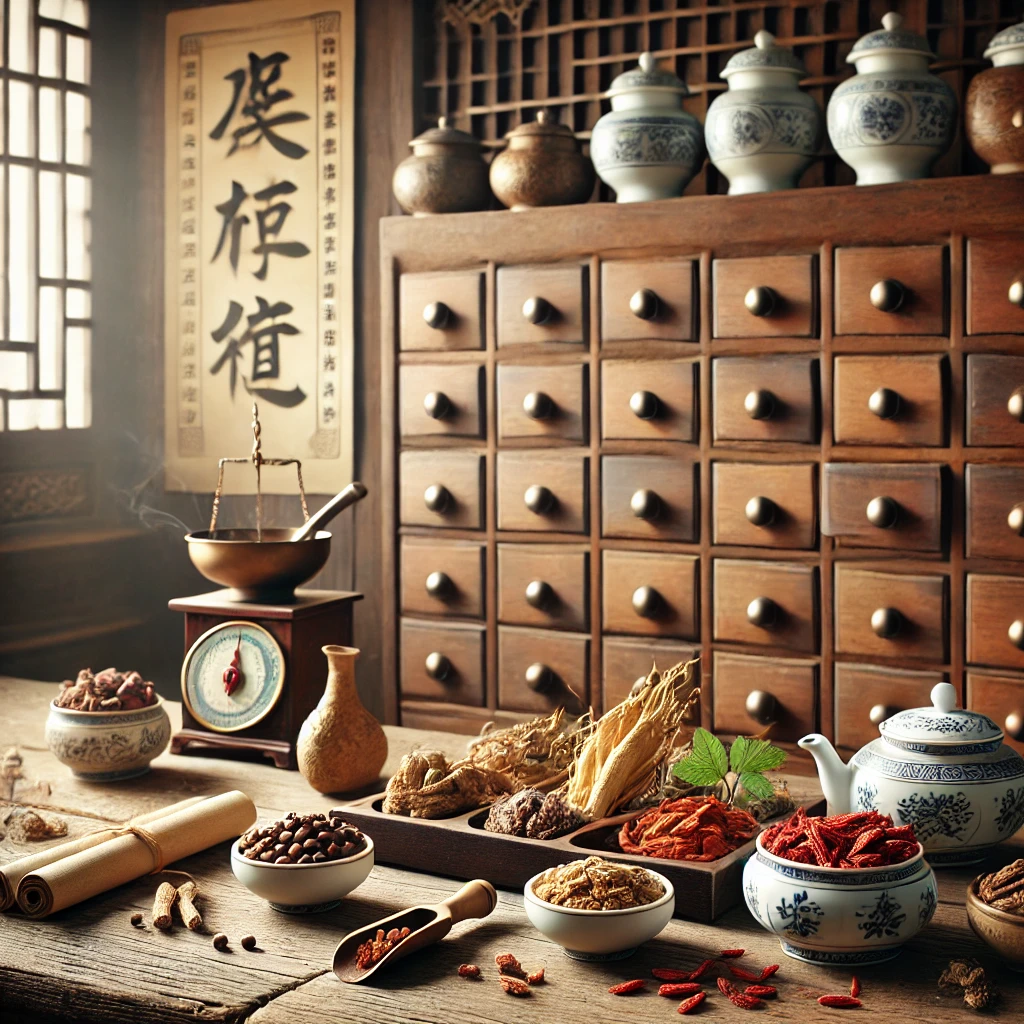Overview
Chinese Herbal Medicine is one of the oldest and most sophisticated healing modalities within Traditional Chinese Medicine (TCM), dating back over 2,500 years. It involves the use of plant, mineral, and sometimes animal-derived substances to restore balance, promote vitality, and treat a wide array of physical, mental, and spiritual conditions. Rooted in Taoist philosophy, it emphasizes harmony between the body, mind, spirit, and environment.
Foundational Principles
Chinese Herbal Medicine is grounded in the broader framework of TCM, which includes:
- Yin and Yang Balance – Herbs are used to restore the dynamic equilibrium between these opposing forces.
- Five Element Theory – Herbs support and regulate the Wood, Fire, Earth, Metal, and Water elements.
- Qi (Vital Energy) – Many formulas focus on regulating or tonifying Qi.
- Organ Systems (Zang-Fu) – Each herb targets specific organs not just physically, but energetically.
- Patterns of Disharmony – Instead of disease names, TCM identifies patterns (e.g., Liver Qi Stagnation, Kidney Yin Deficiency) and prescribes accordingly.
Forms of Herbal Preparations
Herbs may be combined into complex formulas and administered in various forms:
- Decoctions (Tang) – Boiled teas made from raw herbs.
- Powders (San) – Ground herb mixtures, sometimes taken with water or food.
- Pills (Wan) – Pre-formulated for convenience.
- Tinctures – Alcohol-extracted herbs for rapid absorption.
- Topicals – Balms, plasters, or washes for external application.
Types of Herbs
Herbs are classified based on their energetic properties and actions:
- Temperature: Cold, Cool, Neutral, Warm, Hot
- Taste: Sweet (tonifying), Bitter (draining), Pungent (dispersing), Sour (astringent), Salty (softening), Bland (leaching dampness)
- Action: Tonify Qi, Nourish Blood, Clear Heat, Move Stagnation, Expel Wind-Damp, etc.
Commonly Used Herbs:
- Astragalus (Huang Qi): Boosts immune system, tonifies Qi
- Licorice Root (Gan Cao): Harmonizes formulas, detoxifies
- Ginger (Sheng Jiang): Warms the middle, disperses Cold
- Peony Root (Bai Shao): Nourishes Blood, regulates menstruation
- Rehmannia (Shu Di Huang): Nourishes Yin and Blood
Philosophical & Spiritual Dimensions
Chinese herbal medicine views the body as a microcosm of the universe. Herbs are not just biochemical agents but carriers of Shen (spiritual essence) and Qi. Healers often consult the spirit of the plant or consider the soul-nourishing properties of an herb in addition to its physical actions.
Some practitioners believe:
- Certain herbs carry “Shen-calming” properties, like Polygala (Yuan Zhi) or Poria (Fu Ling).
- Harvesting time and method influence spiritual potency.
- Herbs work on meridians and energetic layers that influence the emotional and spiritual body.
Clinical Applications
Chinese herbal medicine is used to treat:
- Chronic fatigue, digestive issues, insomnia, anxiety
- Reproductive and hormonal imbalances
- Respiratory disorders, allergies, common colds
- Skin conditions, inflammation, pain
- Emotional imbalances and energetic stagnation
It is often combined with acupuncture, dietary therapy, and Qi Gong for a full-spectrum approach to wellness.
Safety and Integration
While generally safe when prescribed by trained practitioners, Chinese herbs can:
- Interact with Western medications
- Require careful formulation for individual constitutions
- Vary in quality and purity—always source from reputable suppliers
Modern Research and Global Adoption
- Studies have confirmed the anti-inflammatory, adaptogenic, and immunomodulating effects of many herbs.
- Increasingly integrated into functional medicine and holistic health protocols worldwide.
- Used alongside Western medicine in Chinese hospitals for integrative oncology, gynecology, and more.
Related Subcategories
This topic is most relevant under the following subcategories:
- Traditional Chinese Medicine (TCM)
- Herbal Healing Systems
- Energetic & Elemental Healing
- Mind-Body-Spirit Therapies
- Integrative and Complementary Medicine
Visual Element Recommendation
Suggested Visual Content:
- Infographic: “Five Element Herbs & Their Energetics”
- Carousel Post: “Top 5 Chinese Herbs for Energy and Immunity”
- Background Image: “Serene Chinese Apothecary with Wooden Drawers and Dried Herbs” Let me know if you’d like one of these designed.

